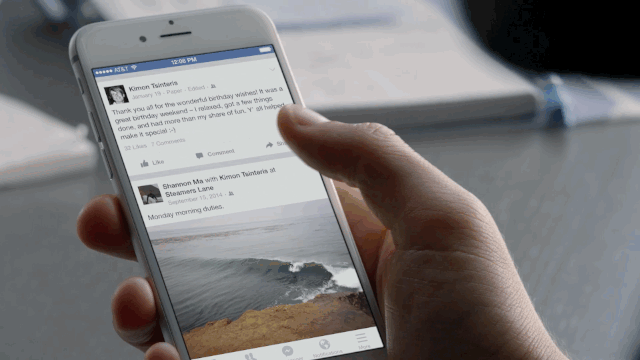By
AMY COUCH

The next time you go to a bar or restaurant, look around and count how many people are looking at their phone screen rather than the person that they’re with. The number will astound you, but what is everyone looking at?
The average person spends approximately 135 minutes per day on social media alone, reading articles and reviews, searching for contact details and opening times, and catching up with friends and family. In 2017, 67% of the Irish public used social media as a news source.
But, fatigue is setting in. Reports show that engagement on Facebook has dropped by 50% in the past 18 months, which would suggest that consumers are becoming increasingly desensitised to the content that they see on their newsfeeds. What’s causing this? One reason is that social media has become repetitive—often the same posts from the same brands appear on multiple newsfeeds multiple times a day.
Another is simple over-exposure. 89% of people check their phone within an hour of waking and 30% check their phones within five minutes of going to sleep. Combine this with constant use throughout the day and inevitably the content becomes a blur.
As communicators, this impacts the way we connect with our audience and makes the task of communicating a client’s message more difficult. It means cutting through the white noise like a song cutting through radio static. It can be an arduous task, particularly as social media platforms change their algorithms and data structures, which in turn can make it harder for a brand to be visible.
How do brands do it? There are three fundamental steps that communicators can take to ensure their brand and key messages resonate with customers and other stakeholders.
1. Use the right platform
To engage with your audience, you must know your audience. First, it’s important to acknowledge that clicks don’t necessarily mean engagement. A common symptom of social media fatigue is scrolling for the sake of scrolling, and that means a message can get lost amongst the noise.
Using the correct social media platform to communicate a message is as vital as the message itself, and using the most effective content for that platform can amplify the impression made on an audience.
Generational gaps determine which audiences can be reached and where. For example, Millennials tend to use social media to stay up-to-date with friends and current affairs, while Generation Z prefer to use social media for entertainment purposes. Younger users prefer more visual platforms, such as YouTube, Snapchat and Instagram, while older users prefer to use Facebook and Twitter.
Basic research shows that posting the same content to numerous platforms can lessen its effect. Knowing your platforms means you can make simple edits to your content so it’s more suitable for each social media channel.
2. Maintain a clear message
An effective and clear message is often the most difficult to communicate, and it’s easy for it to get lost in all the information that social media users are exposed to.
A concise, strong and consistent message will be more successful in representing a client’s brand than a message that tries to communicate too much at once over a short period of time. Knowing the client you are working with, their ethos and the message you want to communicate on their behalf, ensures that you have a clear objective from the outset of a project. Be clever, have a strategy in place, and stick to it.
As a communicator, you have 7 seconds to grab your audience’s attention—don’t waste that opportunity by making your message complicated.
3. Create thumb-stopping content

Creating engaging content is key to retaining the interest of your audience and keeping your brand from fading into the background of the social media muddle. In a world of non-stop scrolling, content needs to be eye-catching, breath-taking and ultimately, thumb-stopping.
Just posting an image is no longer enough. Audiences want and expect more. Images and video have proved to be the most effective content, and video shows no sign of slowing. A recent study by Cisco shows that by 2021, 82% of all internet traffic will be driven by video and 80% of internet users can recall an online video that they’ve watched in the last month. It’s only logical to use these outlets to their full capacity and bring brands to life.
Ultimately, the onset of social media fatigue has given professional communicators an opportunity to be creative and find innovative ways to generate a genuinely exciting message. Using exciting visuals, creative story-telling techniques, and audience awareness is a sure-fire way to stop that scrolling loop and grab the attention of the consumer.
While it may prove challenging, it’s the same as doing what we’ve always done—finding a new way to tell a story.
AMY COUCH
Amy is a Digital Executive at PR360. She helps clients to build brand awareness and connect with their audience using social media. Amy likes keeping up to date with the latest social media developments and bringing fresh ideas to a project, usually with a cup of coffee in hand.

